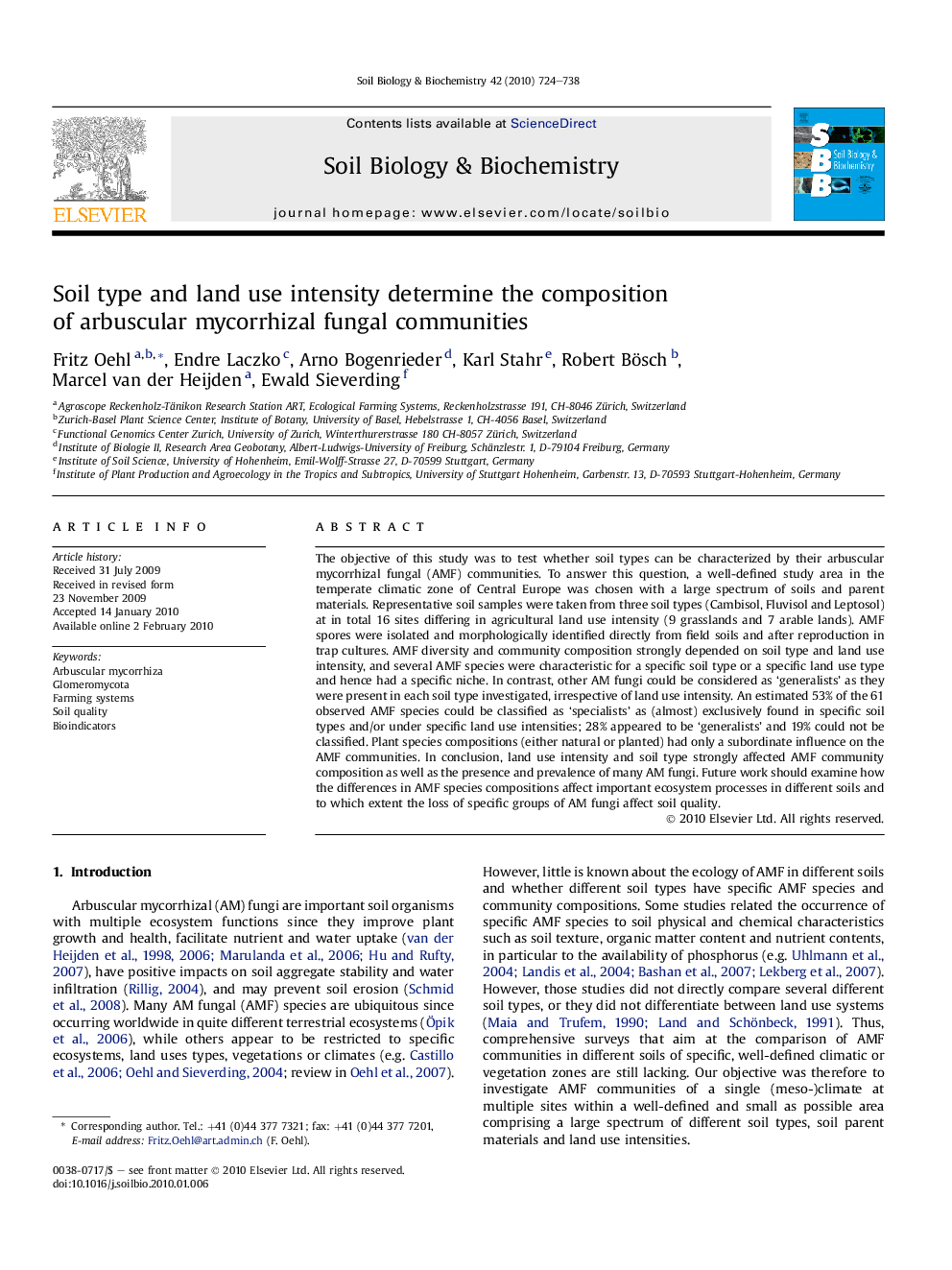| Article ID | Journal | Published Year | Pages | File Type |
|---|---|---|---|---|
| 2024960 | Soil Biology and Biochemistry | 2010 | 15 Pages |
The objective of this study was to test whether soil types can be characterized by their arbuscular mycorrhizal fungal (AMF) communities. To answer this question, a well-defined study area in the temperate climatic zone of Central Europe was chosen with a large spectrum of soils and parent materials. Representative soil samples were taken from three soil types (Cambisol, Fluvisol and Leptosol) at in total 16 sites differing in agricultural land use intensity (9 grasslands and 7 arable lands). AMF spores were isolated and morphologically identified directly from field soils and after reproduction in trap cultures. AMF diversity and community composition strongly depended on soil type and land use intensity, and several AMF species were characteristic for a specific soil type or a specific land use type and hence had a specific niche. In contrast, other AM fungi could be considered as ‘generalists’ as they were present in each soil type investigated, irrespective of land use intensity. An estimated 53% of the 61 observed AMF species could be classified as ‘specialists’ as (almost) exclusively found in specific soil types and/or under specific land use intensities; 28% appeared to be ‘generalists’ and 19% could not be classified. Plant species compositions (either natural or planted) had only a subordinate influence on the AMF communities. In conclusion, land use intensity and soil type strongly affected AMF community composition as well as the presence and prevalence of many AM fungi. Future work should examine how the differences in AMF species compositions affect important ecosystem processes in different soils and to which extent the loss of specific groups of AM fungi affect soil quality.
